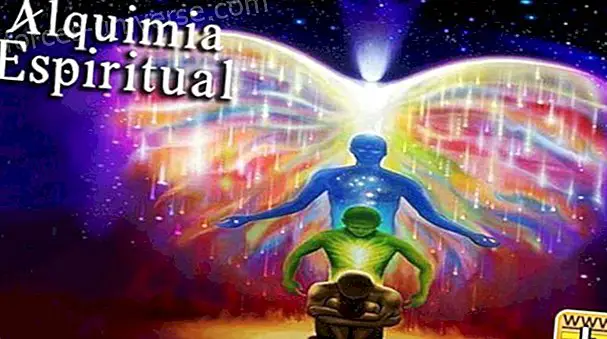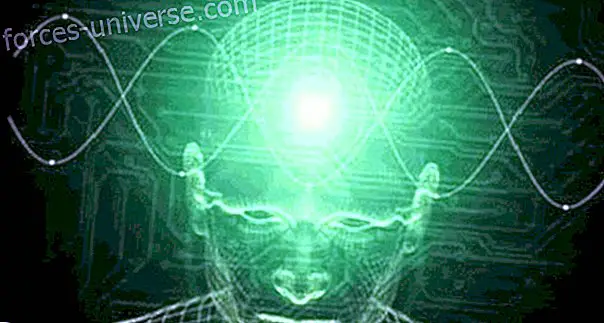
With everything seen about general metaphysics (ontology), and its methods in the previous entries, it remains to elucidate constitutive questions of Being, essence and Reality . Thus, the metaphysician's task is to seek to know the being of the entity in order to try to understand Why is there something? and find their relations with the phenomena of the sensible world and even with nothingness. Thus, it is now convenient to make some basic distinctions, allowing to clarify the question of the problem of being .
What is the difference between the Being and the Entity?

This is one of the darkest points, for most Western thinkers and metaphysicians throughout history. Because many have confused the Entity with the Self, so if we ask ourselves about the whole universe of possible things (or any other trans-human reality), the only thing we would affirm in common to them, is that they simply ARE. In other words: they participate in BEING. However, not everything that ES has the same "level" of existence, for example: you, your mobile, pinocchio, a demon, an electron, love, or justice ARE, but they are not existing in the same way and differ in their ways of being .
Therefore, we talk about the material object (Id quo) and the formal object (formale quod) . The first investigates what the thing is made of and refers to the ontological entity, while the second investigates the object by virtue of thought and the way of conceiving that thing that is studied and how it manifests itself to the senses, the mind and the awareness through the methods of metaphysics.
Once it was clear that the Ent (ens) is everything that is, or that IS. The BE would be that foundation, or fact that allows any of the things (ens) given in the real - regardless of their nature - be or exist . Hence, the BE cannot be conceptualized, and constitutes a poetic mystery in the same way as Nothingness - a force and eternal source of emanation of everything in which there is
On the other hand, the being gives existence to that which appears, and as long as it is captured by the human; It makes sense . Therefore, being is not a concept or predicate of entities, but rather an existential condition, as Kant said (tr. 2006):
Obviously, ser is not a real predicate, that is, the concept of something that can be added to the concept of a thing. It is simply the position of a thing or of certain determinations in itself. In its logical use it is no more than the dome of a trial. (p. 503)
In fact, the problem of being can be answered in multiple ways. Either rationally, or even irrationally. Being permeates everything that exists and slips, disappearing or appearing phantasmagorically before the psyche, captured as a metaphor. Each of us gives meaning, by virtue of their conditions, their freedom and their desire.
What are the modes of Being in metaphysics?

The Self has its ways of expressing itself through entities by virtue of 6 dimensions. Classically, in metaphysics it is known as the moddi essendi, such are:
- Res (the thing, the reality): refers to the extrinsic attribute to consciousness, that is, what appears and to which other entities can oppose. Hence, everything that is (Ens) has existence and reality; but it immediately expresses its way of being, its essence or quidity .
- Aliquid (the something): it is also an extrinsic dimension, hence everything that is something (a monster, a dream, an astral journey, an angel or the god Neptune), is an entity, and you can ask for your reality or "cosidad", if it is one or multiple, if it is true or false and if it is good or bad.
- unum (the one): This mode of being or attribute refers to the undivided, so it is an intrinsic and constitutive property of the thing. It also deals with the quantitative aspect of the entity, studied by the Pythagoreans. Its foundation is the principle of identity.
- Verum (the true), this property is convenient to understanding, and refers to the gnoseological, this attribute allows us to discern between the truth or falsehood of an entity or reality.
- bonum (the good): it is convenient to the will and refers to the practicality of metaphysics, ethics. It also allows to discern about the goodness or evil of any action and / or entity.
- Pulchrum (the beautiful): it is the attribute that corresponds to the aesthetic dimension of a thing.
The nihil can also be added, like that dimension that refers to nothing, to the denials of formalities between entities (and opposes the aliquid), that is, to the differences of one thing with respect to another, p. ex: the substance of your pet, is not the same as that of your neighbor or the same substance of yours. Also nothing, would be the conception of something without essence, to the most informed and indeterminate degree of Being.
On the other hand, for Kant's Idealism, transcendentals will no longer be the properties of entities or things, but the conditions that enable the knowledge of such things . Such conditions are a priori and are contributed by the subject, such are: space, time, and the pure categories or concepts of understanding, by which all things perceived in the world are preached and understood.
In other words, the transcendental Kantians are those subjective, psychological and epistemological conditions by which things are governed. This is what the famous "Copernican turn of" philosophy refers to .
With all that we have seen, we can affirm that the moddi esenddi or transcendental properties manifest the very nature of what is intuited or apprehended in consciousness, that is: the entity; from various points of view, according to the essence of what was captured. But what is the essence?
What is the essence?

The essence has been understood in several ways throughout the history of metaphysics, in the first instance the essence answers the what of a thing, in other words, it answers the question , what is “x” thing? hence the definition is also considered Essence in the ideal or logical sphere. Now, Essence is that which gives an entity a form, that is, it is what makes a thing what it is, and it doesn't make it something else. She gives difference to an entity with respect to other beings.
Essence is expressed - commonly - in matter, however, in metaphysics, essence does not depend on matter to be ; since it can exist without it, such as: God or an angel or a complex of the unconscious . On the other hand, the essence is that which constitutes a thing, responds to its formal cause, so it is closely related to existence and to the Onto-Logical Principles . So if one ignores essence over matter, one would have pure indetermination, resembling nothing. Thus, according to Spinoza (tr. 1987):
“It belongs to the essence of something that, being given, necessarily puts the thing and that, not being given, necessarily destroys it, or that without which the thing cannot be conceived and that, vice versa, cannot without the thing to be nor to be conceived ”(Eth., II, def. ii).
As you can intuit, the essence is a constitutive quality of the real depending on what, is a possible condition; within the material universe; either by mathematical, psychic and intuitive principles that do not imply contradiction. Hence, for example, the reflexive statement of: “ If God is omnipotent, could he create an indestructible spoon that even he cannot destroy? ”It would be meaningless, by virtue of an inadequate idea in not understanding the essence and the principle of incomposibility.
Types or species of Entities in Metaphysics

According to the above, and also according to ordinary experience, it can be said that there is not only one type of entity, but several species. Throughout history, many philosophers have proposed various types and classifications of entities. However, the main ones will be addressed, namely: the real, rational, moral and cultural entity .
- The Real Entity (ens reale): it is also called a material entity, here are all those things of nature and physics, its existence is independent of reason. (here the ontological realism is founded)
- The rational entity (ens rationis): also called logical, and includes all those entities that exist in the mind and by human psyche. It also finds all cognitive and concpetual processes, and I particularly think that the complexes and archetypes of the unconscious are found.
- The moral entity (moral): corresponds to metaphysics as practical knowledge, and includes all objects and actions ( aliquid ) captured by volitional intuition as good or bad according to the particularities of psychism from each person.
- The cultural entity: also called artificial, because it includes everything that is constructed by language and culture, be it the art of a society, the technique or everyday objects such as a fork, a firearm, or the way of raising children.
With all this, it is necessary to distinguish that the union between essence and existence ( position of a temporal space object ) constitutes the fundamental concept of the ontological entity or categorical entity (because real things can be preached to it) . While there are essences that are only intellectually intuitive. The latter also exist, but not in a physical way, but have a formal olivic reality ; hence the existence of God as a second substance is undeniable.
Essence and Ontological Principles

Together with the transcendental notions, there are also some primordial truths that accompany the notion of the entity. Such truths were called "axioms" by Aristotle. They are also the supreme logical principles that represent a basis on which knowledge can be built, since these do not need to be demonstrated, they are immediate truths that we capture a priori and therefore have no contradiction or ambiguity that can lead us to a false knowledge
- Principle of identity; This principle tells us that one thing is identical to itself. It is symbolized (A is A)
- Principle of non-contradiction; This principle tells us that a thing cannot be and not be at the same time and under the same aspect. It is symbolized (A is A and not B)
- Third party principle excluded; between being and non-being there are no middle terms. It is symbolized (A is A or is B but not C)
- Principle of sufficient reason; This principle was not proposed by Aristotle but by the German philosopher Leibniz ; which tells us that a thing to be what it is, must gather sufficient and necessary reasons to justify it, therefore this principle is evoked to reality , everything has a reason for being .
- Principle of composibility: this principle is also formulated by Leibniz and reflects that everything that exists has to be possible or has a tendency to exist. Or in the words of Leibniz (quoted by Ferrater, 1964) "If there were no inclination inherent to the nature of the essence to exist, nothing would exist." (P. 556).
In this way, principles 4 and 5 attract a lot of attention, because by virtue of them; man is open to understanding the circumstantial and essential aspects that occur in his life, such as a disease, which would have a reason for being; and sense of homeostasis of the psyche (rational entity) to be able to change the non-operational behavioral patterns as well as the neurotic ones, which have been unconsciously influencing the person and which by innervation is expressed in symptoms.
Also to understand and differentiate what you really want, in relation to what you receive from your accidental environment; depending on your behaviors, so that your essence and existence are not happening in the contradiction of the desire of your being, and the behaviors that hinder that desire making you less free.
Finally, the ways of being and the ontological principles help us to discern about the essence, existence, truthfulness, goodness or beauty of any type of entity, reality and religious dogma that manifests itself through the being of life, in order of being more critical and free.
Author: Kevin Samir Parra Rueda, editor in the great family of Hermandadblanca.org
More information in:
- Aristotle (tr. 1978). Metaphysics (6th ed.). Buenos Aires: Porrúa SA translation by Francisco Larroyo.
- Ferrater, J. (1964). Dictionary of Philosophy . (5th ed.). Buenos Aires, Argentina: South American Editorial.
- González, A. (1967). Metaphysics Treaty: Ontology . (2nd ed.). Madrid, Spain: Gredos, SA
- Kant, I. (1787-2006). Criticism of pure reason . (2nd ed.). Mexico: Taurus. Sixth reprint 2006.
- Spinoza, B. (tr. 1987). Ethics demonstrated according to geometric order . Madrid, Spain: Editorial Alliance






